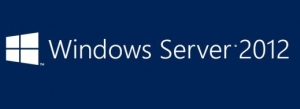 It’s been three years since Microsoft released a server operating system (Windows 2008 R2) and the world has changed significantly in the interim. Google has made us aware of what “the Cloud” can offer with its any-where, any-way, any-time access to files and email with little downtime. Apple and Android dominate tablet and smartphone markets. VMware’s ESXi remains the virtualization platform of choice, at least for Community IT, because of its rock solid performance and robust feature set. Microsoft wants to respond to all of these challenges with Windows Server 2012 (which it has just released this fall and is now available to Community IT clients). Does it succeed?
It’s been three years since Microsoft released a server operating system (Windows 2008 R2) and the world has changed significantly in the interim. Google has made us aware of what “the Cloud” can offer with its any-where, any-way, any-time access to files and email with little downtime. Apple and Android dominate tablet and smartphone markets. VMware’s ESXi remains the virtualization platform of choice, at least for Community IT, because of its rock solid performance and robust feature set. Microsoft wants to respond to all of these challenges with Windows Server 2012 (which it has just released this fall and is now available to Community IT clients). Does it succeed?
Most initial attention will be paid to the user interface which has been radically redesigned. The Start button and its menus are gone, replaced by “tiles” that are clicked to start various apps and programs. This change was driven by an interest in accommodating touch-based user input and while it no doubt makes the operating system more accessible to smartphones and tablets, our guess is that it’s going to be a significant adjustment for users still sitting in front of the traditional keyboard, mouse and monitor.
Of course, the impact of a user interface is more important to the general end user then a to a server administrator; server operating systems need functionality, security and performance more than ease of use (and thus we predict it will slow the adoption of Microsoft’s desktop version of this operating system – Windows 8 – much more than it will impact sales of the server product).
We do note another change in the user interface that is a clear improvement. Microsoft has redesigned its “Server Manager” console to allow users to manage multiple server systems or even multiple sites, in a single workspace. This ability to manage and monitor multiple servers from a single machine should improve efficiency and reduce complexity.
But what about the Windows 2012 feature set? Are there improvements that make Windows 2012 a compelling upgrade to Windows 2008 R2 for Community IT clients? Community IT is particularly excited by a two items promised in Windows 2012:
• Microsoft has made sighnificant improvements to the virtualization platform included with the operating system. This latest iteration includes the ability to migrate virtual machines from one host to another with supposedly very little downtime. Community IT will definitely be testing this in a lab and watching discussion groups for reviews of actual performance in the wild.
• Microsoft’s marketing material promises a much improved “Direct Access” feature. This feature was first released with Windows 2008 R2, but proved so difficult to set up and manage that its adoption was very limited. The idea is great, though: remote computers that are members of the network domain connect automatically and easily to network resources through an encrypted IPv6 channel. Again, the jury is still out on whether actual performance will match the marketing promise.
There are also a bunch of smaller things that will make life a little easier in the world of server administration. Microsoft gets credit for checking off a number of these “wish list” items from the Windows server technicians of the world. Two that come to mind:
• NIC Teaming allows bonding the multiple network cards that are present on one server to quickly double, triple or quadruple the available speeds. This has been available with third party tools for a while now, but life will be easier with it integrated into the Windows operating system.
• Online “disk check” allows us to scan and repair a server disk without taking it offline. This is a feature we’ll rarely use but greatly appreciate when we do, and long overdue.
There are other improvements that bear watching. No Community IT clients currently have an infrastructure supporting virtualized desktops, but the improvements Microsoft and its competitors are making to the technology have definitely piqued our interest. Windows 2012’s implementation of virtual desktops potentially allows the relatively inexpensive deployment of a consistent desktop experience to users whether they are working in the office, from home or on a public computer.
Microsoft has also added a feature called “Storage Spaces” in Windows 2012 which allows very flexible use of internal and external disks attached to the server, including data on the fly data mirroring. We’re not sure yet whether this is a function Community IT clients would benefit from, but we’ll definitely be looking at it more closely.
Overall, we’re excited about Windows 2012 and look forward to its adoption but we’re not feeling rushed, in part because Community IT clients are well-served by Windows 2008 and Windows 2008 R2. The features that most excite us (for our clients) are still unproven and there is enough history of Microsoft product releases struggling in the earliest part of their life cycles for us to proceed with caution.
We will continue to lab the product, read and educate ourselves, and develop our own internal best practices for Windows 2012 deployment and management. Our expectation is that Community IT deployments of Windows 2012 will start late this year or early in 2013.
